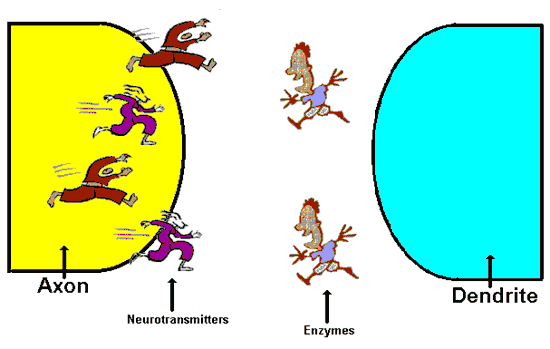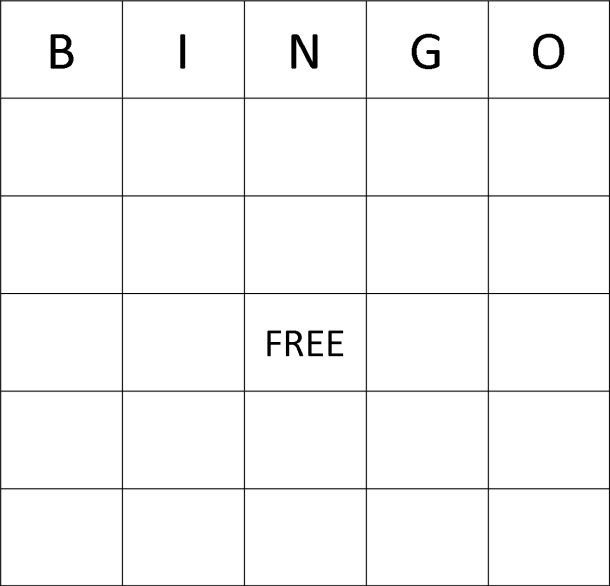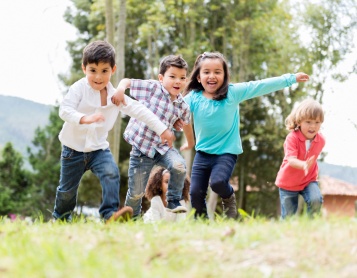
Point of view
This week’s theme is all about looking at things from another point of view. It is based on chapter 2 of “What to do When Your Temper Flares” which is a book about anger management that is a kid’s guide to overcoming problems with anger written by Dawn Huebner, Ph.D.
I think….
Getting Started: An Overview
- Read What to Do When Your Temper Flares by Dr. Dawn Huebner Chapter 2 –
- Discuss: Synonyms of “Angry“
- Discuss and list: Things that make me mad
- Discuss: “…It was the thoughts about what happened that made you mad, or that helped you fell fine.” p. 17 How does your perspective or view of the event change how you feel?
Snack & Nutrition
- Jell-O wigglers – made from hot and cooled – when it was hot, it was liquid and could burn someone, but when cooled, it barely wiggles and is fun to eat; The point: keeping a cool head makes life fun
Art & Crafts
- Calm – draw a picture of what ‘calm’ looks like to you
- Comic thoughts – draw a comic person or animal thinking irritated thoughts after something frustrating happens and the result AND THEN draw a comic thinking calm thoughts after the frustrating thing and the result of those thoughts.
Engineering and Science
- Not calm – Dancing Raisins – experiment with raisins in a cup of sprite/7 up OR 1 tsp. baking soda in a ¾ cup vinegar — also experiment with using uncooked pasta, mothballs or other items. Will it work in plain water? Why?
Take the Challenge/Read/Write/Homework/Educational Games
- Seething with Furious Irritation – write synonyms of ‘Anger’ – use different colors and fonts to make a cool poster
- Annoyed, Resentful, Enraged — What makes you mad? Write a list and illustrate what makes you mad.
Look at The Word
- What shall we think about? Philippians 4:8
- Instead of being angry, what shall we do? Ephesians 4:31-32
- You are not alone. Others have changed, too. 1 Timothy 1:12-15
Sports Zone/Games/Physical Fitness
- Freeze Dancing — Dance to a tune – fast to fast music & slow to slow music – freeze when music stops. Music can excite or calm our bodies.
Point of view
Getting Started: An Overview
- Review chapter 2 of “What to Do When Your Temper Flares”
-

Is there another way to look at what happened?
Reminder: It is your thoughts about what happens that make you mad, or that help you feel fine. Remind yourself that this is not that bad, it could be worse. Remember, you can handle this.
- Follow up: Have you changed some hot thoughts to cool thoughts? Rate yourself: High five if you maintained control today; 3 up if you did OK; thumb up if you need to call a tow truck to get you out of the ditch.
- Discuss: what it means to ‘walk in someone else’s shoes’ and how different people may have different points of view; eagles view, ants view…
- Discuss: How might looking at things from a different point of view change how you might react or respond to a situation?
- Person A wants chocolate milk and sees Clifton take the last chocolate milk from the container, . Person B also wants chocolate milk and sees Clifton pouring out the last bit of chocolate milk from the container, but also sees a staff getting more chocolate milk from the refrigerator.
- Why might person A get angry?
- What are some explosive thoughts they might have?
- What are some calm thoughts person A could think?
- Will person B get angry? Why?
- What might person B be thinking?
- Darcy is walking down the hall with a big stack of books when all of a sudden a door opens and whacks the books, scattering them all over the floor.
- What explosive thoughts might Darcy think? Then what might Darcy do?
- What calm thoughts might Darcy think? Then what might Darcy do?
- This weekend is Joey’s birthday. A couple of friends are talking and then when Joey gets close they glance his way and whisper secretively. There is an awkward silence when he gets to them.
- What explosive thoughts might Joey be thinking? Then what might he do?
- What calm thoughts might Joey be thinking? Then what might he do?
- Person A wants chocolate milk and sees Clifton take the last chocolate milk from the container, . Person B also wants chocolate milk and sees Clifton pouring out the last bit of chocolate milk from the container, but also sees a staff getting more chocolate milk from the refrigerator.
- What was the secret about Anger that we learned on Monday? How can you change your thoughts about what happened? Will this change your response?
Snack & Nutrition
- Prep: cut out portion of food pictures so that it might be difficult to guess what the food is. Have the answers of the food item either on the back of the picture or on 3×5 cards for kids to match with the pictures. Do: Have kids guess what the food items are or match the pictures and answers.
Art & Crafts
- Eagle Eye or Ant Eye — Draw an object as if an ant were viewing it then draw the same object as if an eagle were viewing it
- Point of View — Choose a simple object to draw and place it on a table. Look down at it while you are standing up. Kneel and look at the front of the object. Kneel and look at the side of the object. How does the point of view change what you see? Draw the object from the front, back, and top. How are they different?
Engineering and Science
- Buddy building – gather building supplies with a buddy so that you each of the same supplies; sit back to back with your buddy; One of you will be the leader and the other will follow the directions the leader gives. Both the leader and follower will be (trying) to build the same thing. The leader will build it and give directions to the follower. The follower may NOT look at the leader’s example, but just follow the directions. Can the follower build from the leader’s perspective?
Fun With Words
- Write what happened at 9:00 (or another specified time) today, from your perspective. Do you think everyone’s account will be the same?
- Read “It Could Have Been Worse”
Math Challenge
- Draw from a 3-D drawing point of view. (This pdf is from School District 35 Langley)
- 3-D Perspective — Choose which picture shows the requested point of view. This is an online game from Study Ladder
Look at The Word
- What is the secret of being content? Who gives us strength to withstand good times and bad? Philippians 4:12-13
- Changing our thoughts takes a lot of strength. A heavy weight champion starts small and with his trainer’s help builds his muscles and works hard to be able to lift heavy weights. We, too have a trainer. We are not alone. How can we rejoice, see the positive, and have peace? Philippians 4:4-7
Fitness and Play
- Play Capture the Flag
Perspectives
Getting Started: An Overview
- Review chapter 2 of “What to Do When Your Temper Flares”
- Reminder: It is your thoughts about what happens that make you mad, or that help you feel fine. Remind yourself that this is not that bad, it could be worse. Remember, you can handle this.
- Follow up: Have you changed some hot thoughts to cool thoughts? Rate yourself: High five if you maintained control today; 3 up if you did OK; thumb up if you need to call a tow truck to get you out of the ditch.
- Define: What is perspective?
- the method by which solid objects drawn or painted on a flat surface are given the appearance of depth and distance
- a particular way of viewing things that depends on one’s experience and personality:
- Perspective also means the ability to consider things in relation to one another accurately and fairly
- Discuss: from different angles – read story of The Elephant and the Blind Men
Snack & Nutrition
- Popcorn flavor factory — Pop enough plain popcorn and to fill 4 medium bowls (about 12 cups in each). You will add a different seasoning to each bowl so that you have one bowl for each flavor and enough popcorn for everyone to taste each flavor.
- Salty: Place 2 Tbsp of butter in a mug and melt it in a microwave. To bowl #1 add melted butter slowly while stirring. Sprinkle with salt and stir.
- Spicy: Place 2 Tbsp of butter in a mug. Add 1/2 tsp of chili powder and 1/2 tsp. of garlic powder. Melt in microwave, stir and add to bowl #2 slowly while stirring the popcorn.
- Sweet: Place 2 Tbsp of butter in a mug. Add 2 Tbsp honey and 2 Tbsp maple syrup. Boil in microwave about 45 seconds. Pour slowly into bowl #3 while stirring the popcorn.
- Plain: Do not add anything to the popcorn
- Popcorn perspective – judging fairly, which snack items taste the sweetest? saltiest? spiciest? are the most crunch? best tasting?
Art & Crafts
- Drawing in perspective – Make a long straight road or railroad track that seems to go on and on until it vanishes on the horizon. See how in the following video. Also learn how to draw what’s on either side, in perspective.
Engineering and Science
- Make a structure using Lego. Can you draw what you made?
- What does an architect do?
Math and Mental Challenges
- String Art – Draw a large L about 2 inches from the left and bottom sides of your paper (or other angle). Make dots along the L every ½ inch. Now you have points along the tall vertical line and points along the long horizontal line. There are several ways you can proceed. Which ever way you choose your first string or line will run from the top point of the L or vertical line to the point where both lines meet, which is the first point of the horizontal line. The second line will run from the 2nd point down on the vertical line to the 2nd point across on the horizontal line.
- Using a ruler or straight edge to make straight lines, draw lines with colored pencils as directed above or in the following video.
- Using a small nail or large thumbtack make holes on each dot. Thread sting on a sharp or dull needle. Sew thread from point to point as directed above or in the following video.
- Glue your paper onto a Styrofoam square or a board. Push thumbtacks or hammer a small finishing nail into the Styrofoam or board where each dot is. Wrap string or yarn around each thumbtack or nail as directed above or in the following video to make your string art.
- See directions also at mathcats You can get patterns at mathcats, too.
Fun With Words
- Describe the game you played at recess (or another activity) from your perspective.
Sports Zone/Games/Physical Fitness
- Make an obstacle course and time participants going thru it
Eye to Eye
Getting Started: An Overview
- Discuss: types of eyes OR eye facts – see handout or these websites:
- camera vs. compound eyes:
- 10 amazing animal kingdom eyes:
- types of eye shapes:
- Discuss: seeing eye to eye – agreeing with someone.
- Think of your favorite thing to play…. Find someone who agrees with you

- Think of your favorite thing to play…. Find someone who agrees with you
- Discuss: Things are not always the way they seem, as you’ll find out in today’s activities.
Snack & Nutrition
- What color foods are good for your eyes? Orange — such as carrots and sweet potatoes. What is your favorite way to eat carrots? Have a taste test.
- Fresh, crisp, raw carrots plain
- Fresh, crisp, raw carrots with dressing such as ranch
- Cooked carrots plain
- Cooked carrots with butter
- Make a rainbow of various colorful food or pictures of food

Art & Crafts
- Visual Discrimination How good are you at seeing different colors? Let’s find out.
- Preparation: Put equal amounts of water into 5 to 10 different containers (paper cups, drinking glasses, yogurt containers all work well). Then put one drop of FOOD COLORING into one of the containers of water. Put two drops of food coloring into the next container, 3 drops of food coloring into the next container and so on. Label the cups with a secret code so you know how many drops of food coloring went into each cup.
- Activity: Arrange the colors from lightest to darkest. Keep track of where mistakes are made.
- Extend Activity: Does the type of light make a difference in how well the colors can be arranged? Try the following types of light:
- Dim vs. bright light
- Outside (natural) vs. Inside (artificial) light
- Fluorescent vs. Incandescent light
- Visual Spin Is there color in black and white? Make a Benham disk – print directions and disks — change a black and white image to a colored image with just a spin

Engineering and Science
- How does the eye work?
- Eye challenges: See more here 14 pages
- Aim – Depth Perception Two eyes are better than one, especially when it comes to depth perception. Depth perception is the ability to judge objects that are nearer or farther than others. To demonstrate the difference of using one vs. two eye to judge depth. Hold a pencil in each hand with your arms fully extended and far apart from each other. With one eye closed, try to touch the end of the pencils together. Now try with two eyes: it should be much easier. This is because each eye looks at the image from a different angle. This experiment can also be done with your fingers, but pencils make the effect a bit more dramatic.
- Drop It! Depth Perception Here’s another demonstration of the importance of two eyes in judging depth. Collect a set of pennies (or buttons or paper clips). Sit at a table with your subject. Put a cup in front of your subject. The cup should be about two feet away from the subject. Have your subject CLOSE one eye. Hold a penny in the air about 1.5 ft. above the table. Move the penny around slowly. Ask your subject to say “Drop it!” when he or she thinks the penny will drop into the cup if you released it. When the subject says “Drop it,” drop the penny and see if it makes it into the cup. Try it again when the subject uses both eyes. Try it again with the cup farther away from the subject. Try it again with the cup closer to the subject. Compare the results of “10 drops” at each distance.
- Shifting images Here’s another way to demonstrate how different images are projected on to each eye. Look at an object in the distance (20-30 feet away), such as a clock on the wall. Close one eye, hold up your arm and line up your finger with the object. Now without moving your finger or your head, close the opened eye and open the closed eye. The object in the distance will appear to jump to the side…your finger will no longer be lined up. This shows that different images fall on each eye.
Fun With Words
- Read an Eye spy book and find the objects with a friend. Here is a simple I spy book:
Fitness Play
- Can you accurately judge your speed and distance to the bacon along with your opponent’s speed and distance and correctly decide if you should grab the bacon or catch the ‘thief’?
- Play Grab the Bacon
Set Up: Large rectangular area, such as a basketball court or field. Designate clear boundary lines. Choose an object to be the ‘bacon’ such as a soft block of wood, white board eraser, soft foam ball, or handkerchief.
How to Play:
Divide everyone into two to four groups; each team sits on a boundary line.
Give each player a number, each group should have a one, a two, etc.
Place the “bacon” in the center of the playing area and assign each team one goal line at either end of the playing area.
The adult calls out a number and all students with that number run to pick up the “bacon.”
The person who gets the “bacon” first tries to run across his/her teams goal line without being tagged. The person whose number was called who did not get the “bacon” should try to tag the other player before they get across the goal line.
Once someone is tagged or gets across their goal line, the round is over. Everyone who played in the round give each other high-five’s and they go back to the boundary line with their teams.
All in the head
Getting Started: An Overview
- Review chapter 2 of “What to Do When Your Temper Flares”
- Reminder: It is your thoughts about what happens that make you mad, or that help you feel fine. Remind yourself that this is not that bad, it could be worse. Remember, you can handle this.
- Follow up: Have you changed some hot thoughts to cool thoughts? Rate yourself: High five if you maintained control today; 3 up if you did OK; thumb up if you need to call a tow truck to get you out of the ditch.
- How does our brain think?
- The cerebellum controls and coordinates movements of the muscles, like walking or swinging the arms. This means that the movement is smooth and controlled and you don’t fall over when you turn around.
- The outside layer of the cerebrum has special areas, which receive messages about sight, touch, hearing and taste. Other areas control movement, speech, learning, intelligence and personality.
- The brain stem is in charge of keeping the automatic systems of your body working. You don’t have to think about breathing, you just do it automatically, but you can decide if you want to hold your breath for a short time. You don’t have to think about your heart beating because your brain keeps it going automatically.
- A brain’s structure and function
Snack & Nutrition
- Make a Brain. Well it can’t think, but it is the basic size and weight of the brain and it kind of feels like a brain. This recipe is from the Pacific Science Center and the Group Health Cooperative in Seattle, WA
Materials:
1.5 cups (360 ml) instant potato flakes
2.5 cup (600 ml) hot water
2 cups (480 ml) clean sand
1 gallon ziplock bag
Combine all of the ingredients in the ziplock bag and mix thoroughly. It should weigh about 3 lbs. (1.35 kg.) and have the consistency of a real brain.
Imagine That/Art & Crafts/Drama
- Make a model of the brain using play dough:

by Erin
Engineering and Science
- Learn about synapse and neurons here:
- How you think involves neurons and synapses:
- Make a model of a neuron – see printed info from this site

- Create a model of a neuron by using clay, playdough, styrofoam, recyclables, food or anything else you can get your hands on. Use pictures from books to give you an idea of where the components of a neuron should go and what shape they should be. Use different colors to indicate different structures. Make a neural circuit with a few of the neurons. Create sensory or motor systems. Eat your model if you made it out of food!!
- Here’s the most simple model of a neuron I can think of…and you don’t need any supplies. It’s your hand! Hold out your arm and spread your fingers. Your hand represents the “cell body” (also called the “soma”); your fingers represent “dendrites” bringing information to the cell body; your arm represents the “axon” taking information away from the cell body.
- Learn more about your brain:
Fun With Words
- Make a list of ways to protect your head and brain OR choose 1 way and illustrate it and make a poster (poster contest) — ideas & answers are here
- wear a seat belt
- wear a proper helmet for sports
- have a proper falling surface for playgrounds and gymnastics
- don’t use drugs; be careful with all chemicals
- eat healthy – good brain food
- look before you leap, especially when diving/swimming
Sports Zone/Games/Physical Fitness
- Synapse Tag (see more here):
In the game of “synaptic tag,” you are part of the synapse. The object of the game is to get as many neurotransmitters across the synapse to the dendrite without being caught (deactivated) by the enzyme. It is like a game of tag. Draw or find a space for the axon and a dendrite (see the picture below). Some players are neurotransmitters and they wait in the axon; other players are enzymes, they wait in the gap between the axon and the dendrite. It is best to have more neurotransmitters than enzymes. The enzymes are “it.”

When someone says “go,” the neurotransmitters run across the synapse as fast as possible without being touched by an enzyme. If a neurotransmitter is touched by an enzyme, it must go back (be reabsorbed) into the axon and wait until the next turn. If a player makes it to the dendrite, the player is safe. Play as many times as you like. Make sure everyone has a chance to be a neurotransmitter and an enzyme. Note: make sure you provide enough space in the axon (synaptic terminal) so players will not run into one another.
- Try also Saltatory Conduction and other games from the same site
Continue this unit based on the book, What to Do When Tempers Flare by going to the theme, On the Wild Side, which is based on chapter 3 of the book, A Secret About Anger.



























